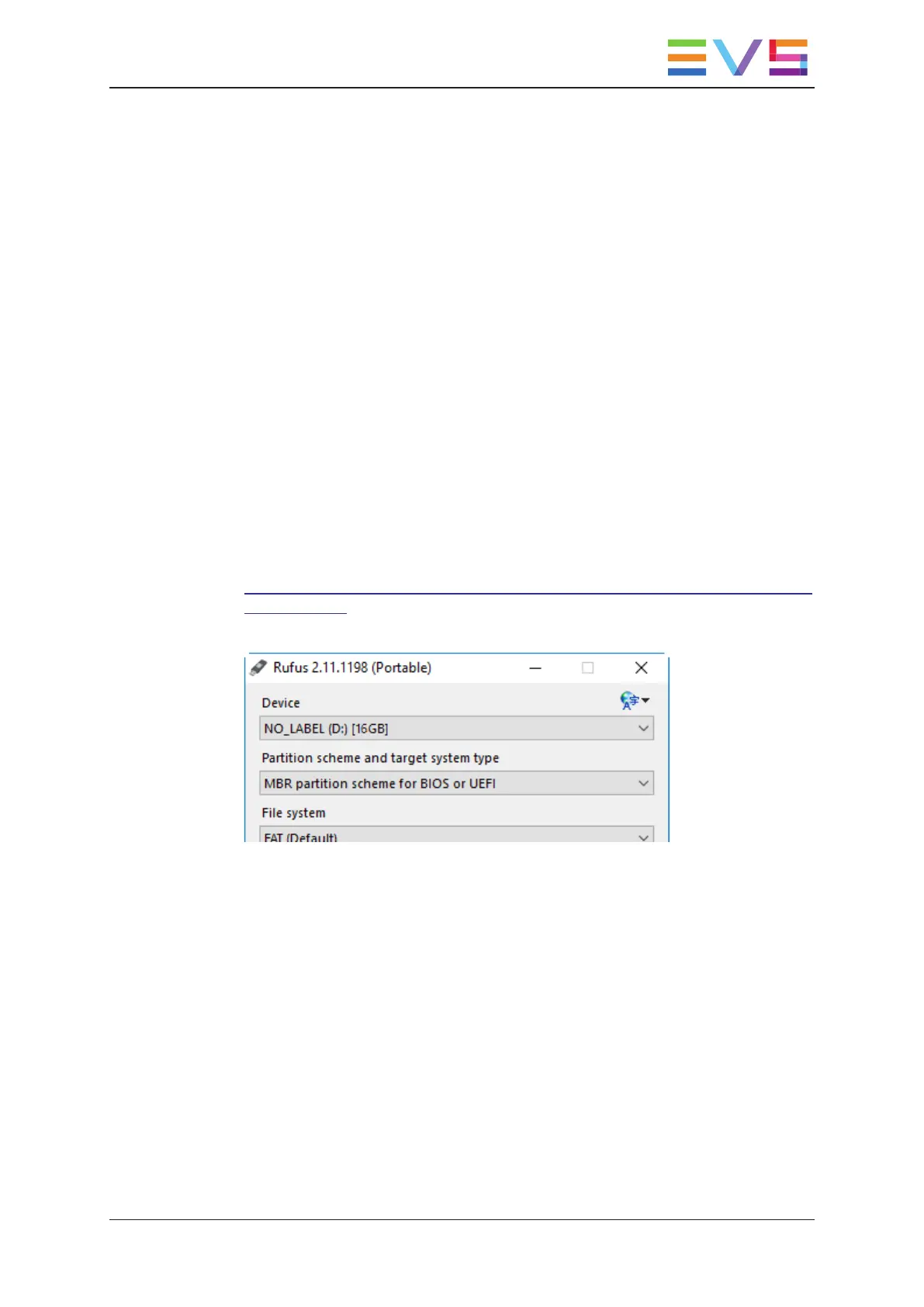

Do you have a question about the EVS X-ONE and is the answer not in the manual?
| Category | Computer Accessories |
|---|---|
| Networking | Ethernet |
| Type | Video Switcher |
| Video Standard | HD |
| Video Format | 1080p |
| Inputs | HDMI, SDI |
| Outputs | HDMI, SDI |
| Audio I/O | Embedded audio |
| Control | Web Interface |
| Features | Multi-View |
| Input Ports | 4 x HDMI |
| Output Ports | 2 x HDMI, 2 x SDI |
Details the EVS X-One as an all-in-one live production system for small and mid-sized events.
Provides a general overview of the X-One system setup, including hardware and network connections.
Specifies network connection requirements, including link type and speed for X-One client and server.
Outlines technical recommendations for using extenders and multiple screens with the X-One system.
Step-by-step guide for the initial installation of the X-One system, including USB key preparation.
Instructions for upgrading an existing X-One system to version 1.7, using a USB key and command line.
Details on connecting SDI connectors for incoming and outgoing feeds, including port assignments.
Recommendations for securing SDI cables to prevent connection failures and hardware damage.
Information on connecting up to two video monitors to the X-One server via DisplayPort.
Guide for connecting the Beplay remote and external controller via USB to the X-One server.
A warning regarding DisplayPort cable usage, specifically pin 20 (DP_PWR), and potential initialization issues.
Explains how to connect the BFE Tally Box using DB-25 connectors for PGM and PRV relay contacts.
Procedure to manually change the X-One server's management IP address and hostname using GNOME settings.
How to arrange displays and set screen resolution using the NVIDIA X Server Settings tool.
Instructions for mapping touchscreens, essential for accurate touch gesture input on monitors.
Guide for requesting, importing, and managing X-One license keys using the License Manager.
How to customize Beplay remote button assignments by modifying the remoteConfig.json file.
Instructions for customizing external controller button actions by modifying the secondaryKeyboard.json file.
Web tool for monitoring server health, status, restarting micro-services, and exporting logs.
Provides a glance at the status of X-One micro-services and backend components.
Details system checks performed on the X-One, including DNS, disk space, RAID, and service status.
Displays statistics about the health and performance of backend and server hardware components.
View incoming SDI feeds, technical details, status, and genlock status.
Displays storage information for the X-ONE server, including used space and partitions.
Real-time statistics on Linux subsystems like CPU, Memory, I/O, and Network performance.
Real-time information on CPU and CPU core temperatures of the server.
Provides detailed information about ongoing ingest streams, including source and destination data.
Check microservice status in Docker, download logs, and restart services.
Check status of native microservices on X-One and restart them if down.
Compare running service versions with expected versions on the server.
Tools and commands for monitoring Deltacast I/O board and incoming video signals.
Procedure to re-initialize the X-One client, reverting settings to factory defaults.
How to generate, export, and manage system log files and crash dumps.